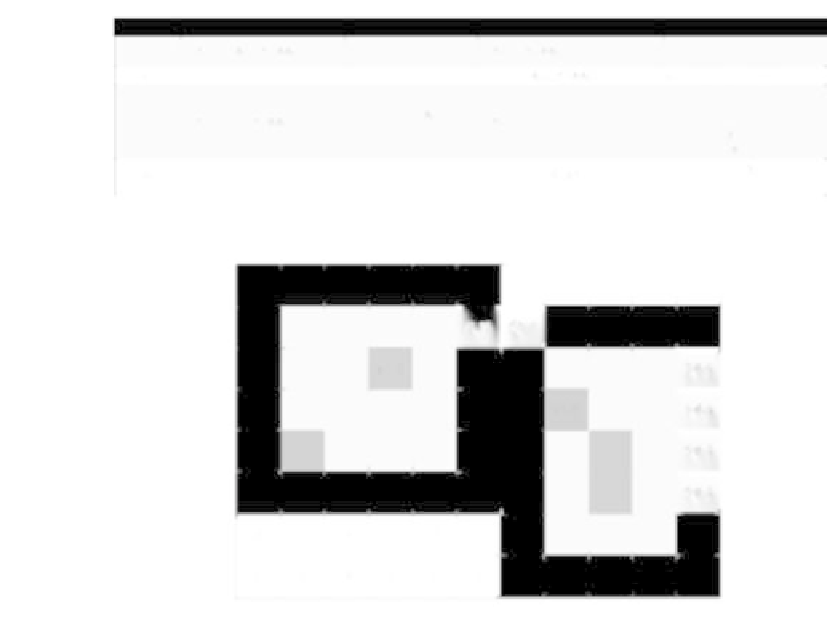Biomedical Engineering Reference
In-Depth Information
FIGURE 4.1: (A) Table of the symbolism used in both the standard CPM
and in the compartmentalized extension, with appropriate examples. (B) Bidi-
mensional square CPM domain representing the elements defined in the com-
partmentalized example in the above table. The bold borders indicate their
external membranes @, the light borders the internal ones. = 1; 2 are
compartmentalized individuals, each of which is formed by four units, while
= 9; 10 are standard, noncompartmentalized individuals.
phologies is to introduce a compartmentalization technique. According to this
approach, a collection of standard CPM objects can be clustered to form a
compartmentalized element, which can better reproduce a real biological indi-
vidual. In other words, if in the basic CPM a single discrete object represented
an entire individual, it now represents one of its compartments. Technically,
with the new procedure, the discrete units
, identified as usual with their
spin , share an additional attribute, a cluster id (
) 2N, which denes
the compartmentalized individual they belong to. Obviously, discrete units
without are not part of a compartmentalized entity, but represent, on their
own, an entire element (as in the basic CPM). Apart from the type already
dened for the discrete units, (
), we can now introduce a type for the








Search WWH ::

Custom Search